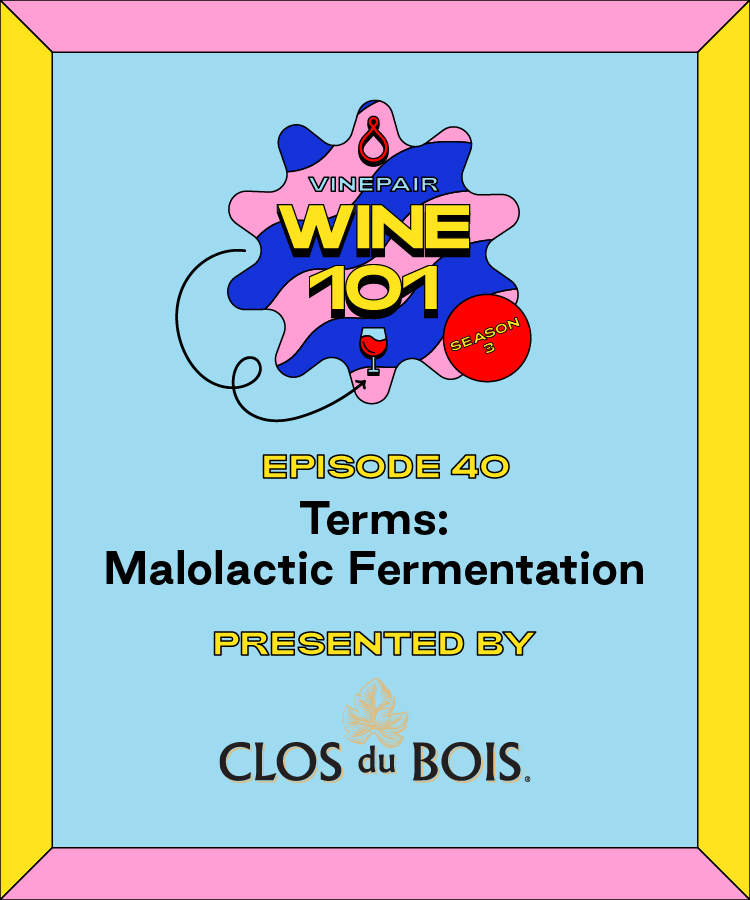
This episode of “Wine 101” is sponsored by Clos du Bois. Today we’re talking about malolactic fermentation. If you want to taste a great example of this, get the Clos du Bois Chardonnay. It’s soft and creamy, with a depth that exemplifies the process in spades. It’s a classic American Chardonnay that continues to stand the test of time.
Other than being a mouthful to say, what is malolactic conversion? In short, it’s the introduction of lactic acid bacteria to malic acid and residual sugars, which, in turn, converts said malic acid into lactic acid.
As grapes ripen, they produce malic acid up to a certain point, then decompose. How much malic acid is produced depends on several factors, like the grape varietal in question. But either way, this acid translates to a harsh, austere brand of acidity. Wine will undergo malolactic conversion naturally on its own time, but winemakers can induce it early on by buying lactic acid bacteria and prematurely inoculating the grapes, cutting malic acid levels down and bolstering lactic acid.
Due to lactic acid being a much softer acid, this process ultimately decreases the resulting wine’s acidity, softens the palate, and brings other complex notes into the wine’s bouquet of flavors. Malolactic conversion creates a small amount of carbon dioxide — hence why it’s often called malolactic fermentation — as well as diacetyl, a chemical compound that packs a resoundingly buttery note often associated with oaky Chardonnays. This conversion can also carry on into post-fermentation since barrels and steel tanks often contain residual lactic acid bacteria from storing previous vintages. Consequently, if malolactic conversion goes too far, the wine’s acidity can get muted and diacetyl will overpower the palate, making it all butter with no bite.
Conversely, some grape varietals, like Reisling, thrive on high acidity, so winemakers will make efforts to block or hinder malolactic conversion with sulfur dioxide. It’s all a little confusing, but never fear because, in this episode, we break down this prevalent process in winemaking and explain how it affects wine from grape to glass. Tune in for more.
Listen Online
Follow Keith on Instagram @VinePairKeith. Rate and review this podcast wherever you get your podcasts from. It really helps get the word out there.
“Wine 101” was produced, recorded, and edited by yours truly, Keith Beavers, at the VinePair headquarters in New York City. I want to give a big old shout-out to co-founders Adam Teeter and Josh Malin for creating VinePair. Big shout-out to Danielle Grinberg, the art director of VinePair, for creating the most awesome logo for this podcast. Also, Darby Cicci for the theme song. Listen to this. And I want to thank the entire VinePair staff for helping me learn something new every day. See you next week.
E. & J. Gallo Winery is excited to sponsor this episode of VinePair’s “Wine 101.” Gallo always welcomes new friends to wine with an amazingly wide spectrum of favorites, ranging from everyday to luxury and sparkling wine. (Gallo also makes award-winning spirits, but this is a wine podcast.) Whether you are new to wine or an aficionado, Gallo welcomes you to wine. Visit TheBarrelRoom.com today to find your next favorite, where shipping is available.
